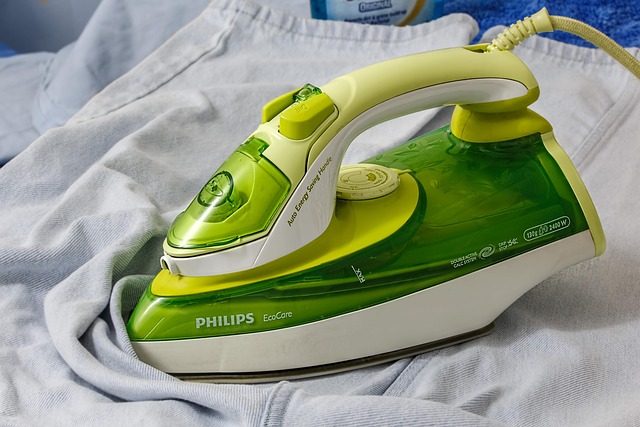Enzyme and Detergent Approaches for Protein-Based Spots
Protein-based stains—such as blood, sweat, egg, dairy, or some food splatters—can be stubborn on fabric, upholstery, and carpet because they bond to fibers. This article explains how enzyme cleaners and traditional detergents work, when to choose one over the other, and practical pretreat and prewash tips for household and ecofriendly routines to reduce odor and restore textiles.

Protein stains are common and often require a different approach from general dirt or grease. Because proteins denature and bind to fibers, prompt attention helps. This article focuses on why enzyme-based products frequently outperform standard detergents for protein spots, how to pretreat and prewash safely on fabric, upholstery, and carpet, and how to balance effectiveness with ecofriendly and odor-control considerations.
What causes protein stains on fabric?
Protein stains come from biological sources—blood, milk, egg, sweat, and certain foods—and they interact with fibers differently than oil-based soils. When heat or time causes proteins to set, the stain becomes harder to remove. For textiles and upholstery, protein residues can also trap odors and attract dirt, so removing both the visible stain and residual proteins is important for long-term cleanliness and odor control.
How do enzyme cleaners work on upholstery and carpet?
Enzyme cleaners use biological catalysts—typically proteases for protein stains—that break protein chains into smaller, water-soluble fragments. On upholstery and carpet, enzymes can penetrate fibers to loosen the bonded material, making it easier to lift with blotting or a mild rinse. Because enzymes target the stain’s molecular structure, they are often more effective than non-biological detergents, especially when the stain is fresh and treated before heat or prolonged drying sets it.
When should detergents or bleach be used on fabric?
Detergents are surfactant-based products that emulsify and lift many types of soils, including mixtures of oil and protein. For colored fabrics, enzyme or detergent pretreatment is usually sufficient; bleach (chlorine) is generally reserved for white, bleach-safe fabrics because it can damage dyes and weaken fibers. Oxygen-based bleaches (peroxide-type) are milder and can help with protein stains when combined with pre-soaking, but enzymes plus cold-water washing often avoid the need for bleaching altogether.
How to pretreat and prewash protein spots effectively?
Begin by blotting excess material—never rub, which can push protein deeper. For fresh spots, rinse with cold water to prevent proteins from setting; hot water can cook proteins into the fiber. Apply a small amount of enzyme-based pretreat or a concentrated detergent directly, allowing 5–15 minutes to act depending on product directions. For upholstery and carpet, use minimal moisture and a blotting technique to avoid overwetting backing materials. After pretreatment, launder or rinse according to fabric care labels, choosing cold or warm cycles as appropriate.
Are ecofriendly and household enzyme options safe for odor control?
Many household and ecofriendly enzyme products are formulated to be biodegradable and less harsh than strong chemical solvents. Enzymes not only remove visible proteins but also reduce the odor-causing residues that remain, which is why enzyme cleaners are popular for pet stains and food residue. When choosing an ecofriendly product, check for fragrance-free or low-volatile formulations if indoor air quality or sensitivity is a concern. Always test in an inconspicuous area on upholstery or delicate fabrics before broad application.
| Product/Service Name | Provider | Key Features | Cost Estimation |
|---|---|---|---|
| Enzyme stain remover (spray) | Biokleen | Protease-based spray for organic stains; fragrance-free options | $8–$15 per 16–32 oz bottle |
| Laundry detergent with enzymes | Tide | Enzyme blend for protein and oil stains; available in liquid and pods | $10–$20 per standard-size bottle or pack |
| Oxygen-based booster | OxiClean | Non-chlorine oxygen bleach for soaking and brightening | $6–$15 per 1–3 lb container |
| Pet enzyme cleaner | Nature’s Miracle | Enzymes formulated for pet urine and organic stains; odor neutralizer | $6–$18 per bottle depending on size |
Prices, rates, or cost estimates mentioned in this article are based on the latest available information but may change over time. Independent research is advised before making financial decisions.
Real-world costs vary by brand, formulation, and region. Enzyme sprays and concentrates commonly retail for single-bottle prices under $20, while enzyme-containing laundry detergents may be part of regular household purchases. For occasional heavy-duty use—deep-cleaning upholstery or professional carpet treatments—service fees can be much higher; for routine home treatment, expect to rely mainly on retail product purchases and occasional rental or pro service.
How to choose between enzyme and detergent approaches?
Choose enzymes when treating fresh protein-based spots or when odors persist; they are especially helpful on upholstery, carpet, and colored textiles where bleaching is not an option. Use detergents for general soil removal and for mixed stains that include oils or pigments. For set-in or very old stains, combine a pretreat using enzymes with a laundering step that includes a detergent or oxygen booster—in that order—to maximize breakdown and rinsing of residue.
Protein stains respond best to prompt, cold-water rinsing followed by targeted pretreatment. Enzyme cleaners offer a scientifically directed method to break down protein molecules and reduce odors, while detergents and oxygen boosters assist in lifting and rinsing residues. Matching the method to the fabric’s care instructions and testing in an inconspicuous spot will protect textiles while improving the odds of full stain removal.





